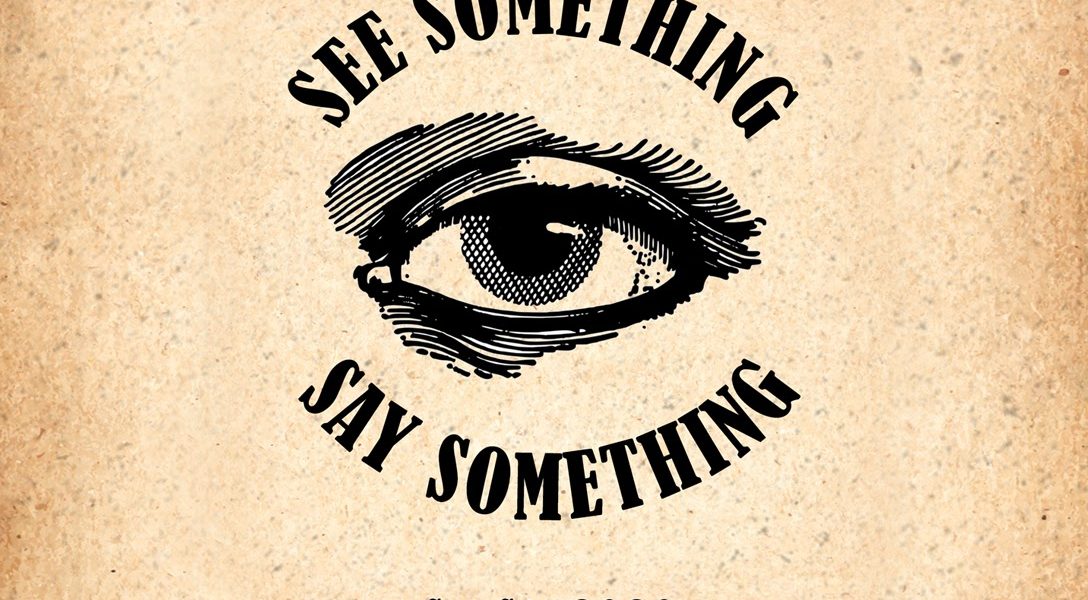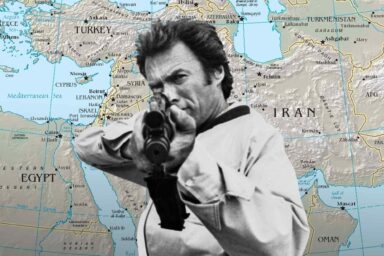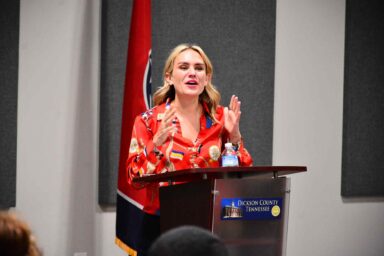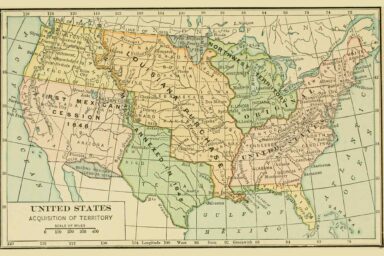Have a problem voting? Report it to SeeSay2020.
You go to vote and discover that the polling place is closed or the machinery isn’t working. What do you do?
You call the election protection hotlines, and they may be able to send out attorneys to help solve the problem. But how can you alert others, including the media?
In today’s Scrutineers podcast, host Emily Levy speaks with Deepak Puri, the founder of “See Something Say Something,” a public tool to address these issues. It debuted during the 2018 midterms and is being refined and re-released for the general election this year as SeeSay2020. You can also view the voting incident map from 2018 at the site.
Between now and the election, this nonprofit and its partners will be informing the public about how they can report problems like long lines, voter intimidation, voting machine malfunctions, and more. Complaints will be screened and then mapped using GIS mapping software.
Puri is an engineer and Silicon Valley veteran and the co-founder of Democracy Labs, which works with progressive groups and campaigns. DemLabs is a nonprofit group that cuts the time and cost needed to implement solutions by using existing free/affordable apps instead of developing new software.



Click HERE to Download Mp3
Full Text Transcript:
| Emily Levy: | Welcome to the Scrutineers Series. I’m Emily Levy, Founder and Director of Scrutineers.org. I’m delighted to be collaborating with whowhatwhy.org to introduce a series of election protection podcasts designed to help you understand the risk to our elections from voter suppression to lack of security. We’ll be talking about what you can do to protect the voters and protect the votes. We’re training a fairness force to help make sure no one stops you from voting and all those are counted accurately. |
| Emily Levy: | Today I’m excited to welcome Deepak Puri, who’s an engineer and Silicon Valley veteran and co-founder of Democracy Labs which works with progressive groups and campaigns. DemLabs engages with organizations around the country to understand their needs and identify where better technology could enable them to do more with less money. So DemLabs is a non-profit group that cuts the time and costs needed to implement solutions. And what they do is they use existing free and affordable apps instead of developing new software. They freely share the details of the apps used and how to use them so that other groups can also benefit from them. And they’ve got some exciting stuff coming up in relation to the election. Welcome Deepak, thank you so much for being here. |
| Deepak Puri: | Well, thanks Emily. Thanks for having us. |
| Emily Levy: | Absolutely. I’m really excited to get to share what you’re doing with our audience. So will you talk to them about See Say 2020, why it exists and what it is? |
| Deepak Puri: | Oh, great. So what had happened was during the midterm elections, people started contacting us and saying, “A lot of voters are facing problems.” But it’s really hard for them to draw attention to what’s going on, and it has to be done quickly in order to make a difference. |
| Emily Levy: | What kinds of problems do you mean? |
| Deepak Puri: | So some of the problems by which they could report a problem and we could help direct it to people who could make a difference. And we wanted to supplement… There’s a whole bunch of wonderful resources out there including the Lawyers’ Committee for Civil Rights who have all kinds of resources. So we wanted to supplement that with other ways. So we included the hotline number, but in addition to that, we worked with Samantha Bee, who has her own TV program and a group called the OSET Institute and NBC. And through that, we were able to collect instances of problems and share them quickly after they’d been vetted with the people who could make a difference. |
| Emily Levy: | Great. So one difference between this and the 866-OUR-VOTE hotline or the ve-y-vota Spanish language hotline, is that with those systems, people can make reports and they go into that system but there’s not a public facing interface where people who want to know ‘has this incident already been reported’, could find that out or that kind of thing. Right? |
| Deepak Puri: | Exactly. |
| Emily Levy: | So that’s a piece that you’re adding as a way for the public to see where the problems are. |
| Deepak Puri: | Right. And it’s important that people’s privacy be protected. So if people go to our website, The DemLabs.org, they can see a map of the instances where trouble happened in 2018. But what we’ve done by design is make sure that the contact details of the person who reported that incident, aren’t public. |
| Emily Levy: | So important. |
| Deepak Puri: | Yep. But we work with voting rights groups and other people who need the information later. And with the person’s permission, we share that with other folks who need it later. |
| Emily Levy: | I am so excited to hear that. So as somebody who’s been an election protection advocate since back in 2004, I have actually had quite a bit of frustration with that Lawyers’ Committee hotline that we’ve mentioned already, that even though when people submit complaints to them, they signed a release saying that their information can be shared with other groups for the purposes of pursuing their complaint, the organization has declined to share that information when we’ve needed it for lawsuits or to otherwise pursue problems that have happened. So I’m really, really excited to hear that you are taking a different position on that. |
| Deepak Puri: | Yeah, because at the end of the day, this is a crowdsourced resource which belongs to the public. Obviously we want to protect people’s privacy and we make it clear on a disclosure statement when people submit a form. Because what we’ve heard from people is if you could go back and see where voter suppression happened in the past, it is valuable information to project where it might happen in the future. But in order to do that, you need to have a data from the past. And that is what we try and serve. |
| Emily Levy: | Great. So who are you hoping will use this tool in this election? |
| Deepak Puri: | In this election, we want to have as many people as possible report instances that they face that prevent them from voting. That’s one. We also have other groups who are, say for instance, they want to monitor the election process. They might be collecting poll tapes, and they want to use that for making sure things go properly. So to answer your question, we want as many people as possible to be aware of this app and then they can submit information. The one thing which I do want to share is, although I call it an app, it’s really a link so you don’t have to install anything. If you simply go to www.seesay2020.com, it’ll take you to the form and See Say, as you probably guessed is an abbreviation of See Something, Say Something. |
| Emily Levy: | Great, so that’s where someone would go www.seesay2020.com to report a problem. They would go if they want to see the 2018 incident map, they’d go to the DemLabs.org. And what if they want to see the 2020 map, where will they go? |
| Deepak Puri: | Oh, what we’ve done is, right in that form at the top, we have a link which shows them the incidents which have been reported. So it’s- |
| Emily Levy: | Great. |
| Deepak Puri: | Yeah. |
| Emily Levy: | So it’s the same link for both? |
| Deepak Puri: | Correct. |
| Emily Levy: | You mentioned using it for collecting poll tapes. So will you talk a little bit about… We’ve talked about it before on this podcast, but since not everyone hears every episode, will you explain what that project is and how it connects with what you’re doing? |
| Deepak Puri: | Absolutely. So before I go there, let me just give you some background. |
| Emily Levy: | Okay. |
| Deepak Puri: | So the See Say Form has the ability to report issues like what kind of problem. We’ve added a new category for poll tape. People can then add other information like time and date where they took the picture. But See Say by itself, has a built-in function so you can attach a photo or a video that’s always been in there. And now whether you take a picture of people intimidating voters at a polling place, or you take a picture of a pole tape, the program doesn’t care, it’s just an attachment. So- |
| Emily Levy: | Great. |
| Deepak Puri: | Makes sense? |
| Emily Levy: | Let’s talk about what is a poll tape and why people take pictures of them. |
| Deepak Puri: | Oh, perfect. So with that as background, so what happens is, I’m not a legal expert nor am I an election official. But to my understanding, and correct me if I go wrong here, Emily, is different polling places typically by law have to produce a tape. And that tape is the count of how many ballots were cast, how many were counted and so on by individual location. So in- |
| Emily Levy: | Let me actually add a couple of things to that. It’s actually by individual voting machine or scanner that counts paper ballots. And it includes not only how many total ballots were cast, but how many for each candidate and how many in the case of questions, propositions, levies, whatever they’re called where you live on the ballot. How many yes votes and how many no votes. |
| Deepak Puri: | Great. Thanks for elaborating on that. So now these tapes, they’re literally like, think of it almost as a receipt you’d get from a cash register. They’re meant to be displayed publicly so anyone can take a look at it, take a photo of it. And this is public information. And then what happens is these individual locations send the results to a central place where they’re tabulated. So for instance, there might be 50 machines and they all go to the mothership where they’re added up. Now, the potential problem is, some tapes aren’t uploaded, maybe the count is wrong, maybe there’s a malfunction somewhere. And as a result, what the central tabulating center reports is one number. But it sure would be handy to be able to add up the tapes from the individual machines to see if there was some problem that occurred in the process. So that’s the problem which a lot of groups are focusing on because everyone wants to make sure that the count is properly done. |
| Emily Levy: | Thank you for describing that. And it is one of the projects that Scrutineers is working on in cooperation with a few different organizations including now See Say 2020 to encourage people all around the country to go to polling places on election night after the polls close and either take photo or video of the poll tapes and upload them to See Say 2020. And also there’s a couple of other places that they can be uploaded so there’s some redundancy in the system. And it’s something that people can do in just a few minutes. They can make a really big difference because it’s one of the main tools we have to catch incorrect election results. Whether they’re a result of error or whether they’re result of malware malicious activity impacting the counting of the votes. So it’s a really important thing and a relatively easy thing for people to learn how to do and to go do in a small amount of time. |
| Deepak Puri: | Right. So what we had done recently on our website, we had put out a blog which says, Take a Bite Out of Vote Counting Crime. And what it does is it literally explains anyone with a smartphone can take a picture of a poll tape and they submit it through See Say and it could be one photo, could be 20 photos. It doesn’t matter. Those photos are automatically uploaded to the Cloud, but before you can add them, that image has to be converted into a digital form. |
| Deepak Puri: | So what we had done was we found this solution which is called Pen to Print. And it’s on a website, it’s spelled pen, P-E-N, to, T-O, Print. And this is a free application that you can find on the Apple store or the Android store. And what it does is you simply take a picture or you point your camera at the poll tape and it goes ahead and digitizes it for you automatically. And then all you have to do is take the text and post it into a spreadsheet. So our goal is how do we make this simple and easy? So if you have 50 volunteers, they could all be scanning tapes and quickly develop a total. So that’s where that app comes in handy. |
| Emily Levy: | So that’s something you’ve incorporated into See Say. It’s not something people have to run themselves before uploading the pictures of the poll tapes. Right? |
| Deepak Puri: | Correct. So what we recommend is, Scrutineers may have 50, 100, 500 volunteers who were taking pictures. All of those pictures are automatically uploaded so the individuals don’t have to worry about scanning it because they’re busily taking pictures. And some of these polling places only put them up for a limited amount of time. So taking the picture and uploading it could be done by a volunteer. And on the back end, you could have other volunteers who use this free app to digitize it and develop totals. Now, any questions on that so far? |
| Emily Levy: | No, I think it’s fantastic. And I love how you’re taking existing software that’s out there and putting it together in a way that may be relatively simple for you, but never would have occurred to me that these capabilities could be available to groups around the country working to protect the elections. I think it’s a tremendous tool. So we’ve talked about if somebody is having a problem when they go to vote. And I assume this is whether it’s early voting or on election day or voting by mail absentee, that they can report the problem that they’re having so that it can be collected with other problems and we can see where action needs to be taken. We’ve talked about how the tool could be used by people who are photographing or taking video of poll tapes. What about how the tool can be used by legal volunteers and by the media? How would you like to see them using See Say 2020? |
| Deepak Puri: | So during the midterms, one of the things that we realized was, like everything in life, there’s bad actors. So there’s people who will intentionally try and gum up the works by putting in bad information, spam and so on. So although something is reported, we first have a step which filters out irrelevant information. And then what happens is, the information that’s been collected, there’s a purpose to it. And we think of it in three or four ways. One is, the public should know about it. This is what’s going on. Second, we want to create alerts. And what better way? Like during the midterms, we worked with Samantha Bee and she has a program called, It’s Not a Game, But It’s Really an App. And so what she was doing when we reported instances that were egregious, like I’ll give you an example in this. |
| Deepak Puri: | One town in Mississippi, the police, bless their heart, had put up barricades around a polling location. No one knew why it was going on, but no one could get to the polling place. So someone reported it and sure enough within a few minutes, Samantha Bee had tweeted this out, “Hey guys, what are you doing? What are these barricades for?” And that created enough attention that sure enough within 30 minutes those barricades had been removed. Which was important because the point I wanted to emphasize is, you have a large group of people equipped with reporting problems. And it’s more curated than just putting it out on Twitter and Facebook, because we’re listening specifically for what people are reporting. |
| Emily Levy: | Mm-hmm (affirmative). |
| Deepak Puri: | Second, we’re validating it. We have teams of volunteers who can in real time screen this stuff, make sure it’s correct. And finally, we take that information and give it to, in this case, a media source who can then report it and take action on it. So the whole thing is trying to compress the time by which people can report an issue until an action is taken. Because if it happens a week later, a month later or something, it’s not that effective. So- |
| Emily Levy: | Right. |
| Deepak Puri: | Go ahead. |
| Emily Levy: | No, I completely agree with you. I think one of the things that’s been really challenging with some of the election protection work is things happen afterwards. We discover problems after the election and while they may call the results into question in some cases, there are very limited avenues available to deal with that after the election. So if you can find out that there’s a problem that’s preventing people from voting during an election, often there are things that can be done about it that can allow more people to vote. So, that’s… |
| Deepak Puri: | Yeah. So I’ll come back. So I want to make an important point here. In addition to media sources, this time around we’re also working with social media influencers. We announced something with the Black American Musicians Association. |
| Emily Levy: | Great. |
| Deepak Puri: | We also work with different voting rights groups and legal groups. The idea is, when we want to provide this information in a curated form to people and organizations who can help ensure fair elections and making sure no one gets oppressed voting-wise. But what’s a really interesting thing about this is, this is not software we developed. Absolutely not. It comes from a company called Esri, E-S-R-I. And what many people don’t realize, I’ll give you a real world example. There’s an application which many of your listeners might be aware of called Waze, W-A-Z-E. And this application is one that if you’re driving along and you see a pothole or you see a traffic accident, you can immediately pull out your phone and report it on Waze. |
| Deepak Puri: | And what happens is, the drivers who are behind you get notified right away that watch out for this pothole or take this detour. And that might sound like a very trivial application, but it really isn’t. Because when you think about it, you have millions of drivers across the US driving all over the place. They’re reporting problems but that information is collected, categorized and then shared with the drivers behind you in a few seconds. And that is a lot of sophisticated processing power. So, what we did was the technology behind Waze which collects information and makes it more meaningful. We said about thinking, if you could do it for traffic, at the end of the day, elections and voting are even more important. But now you have millions of voters going off and voting. Some of them are going to get face hassles. How could we apply the same technology which already exists in to serve a good purpose? And that’s where See Say came about. So the technology has been around for over a decade. We’re just applying it for a good cause. |
| Emily Levy: | Fantastic. So I assume since you’re working with so many different organizations we’re going to start seeing information about it being circulated everywhere. I haven’t seen much yet about it. It’s not coming across my Twitter feed for example, very much yet. Do you have a big push that’s going to be going on to let people know about it? People are already voting all over the country. |
| Deepak Puri: | We are in the process of rolling it out. Like last night Jennifer Cohen, who has a large following on Twitter, she shared the information about See Say- |
| Emily Levy: | Great, that will help. |
| Deepak Puri: | … And we’re hoping that your listeners and other folks who are listening to this, will help spread the word. Because the more people who know about it, the better quality and more comprehensive data we get. And so that’s our goal to help spread the word. |
| Emily Levy: | And so how would you like folks listening to this to spread the word now? Do you have particular content that you’d like them to share on social media from your website? Or do you want them to just write about it and send the link? I imagine people hearing about this will want to share it with other… |
| Deepak Puri: | So there’s three ways they can do it. There’s the URL, which is seesay2020.com. There’s also a Twitter handle @SeeSay2020, and same thing on Instagram, @SeeSay2020. So if they could share that with people. We have a media folder which has assets that people can take, which include images, sample posts and even videos. So any way they want to do it, we will help them. |
| Emily Levy: | Do you want to give a link to that or how would people find that? |
| Deepak Puri: | How about if I share that- |
| Emily Levy: | You can put it in the show notes if- |
| Deepak Puri: | Yeah. I’ll do that. Yeah. |
| Emily Levy: | Okay, great. That sounds great. And one other question I have is, if someone is trying to vote and they’re having difficulty, would you recommend that they do a report both to See Say 2020 and to the other hotlines or is that going to confuse things because it won’t be clear is it two separate incidents or the same incident reported in two places? |
| Deepak Puri: | What we do is we share the link or the phone number for the legal hotline on the form itself. So in case it’s something urgent and they want to draw, get legal help, they should call the hotline. In addition, they can determine if it’s not urgent or they want to share it through other sources, they can also use the form. So the best thing would be to probably put it in both places. |
| Emily Levy: | Okay, great. So if people are having trouble voting, we would like them to report it both at the 866-OUR-VOTE hotline or the ve y vota hotline which you have listed on your form and @seesay2020.com. Okay, fantastic. Is there anything else you’d like people to know about this exciting and really, really important project you’re doing? |
| Deepak Puri: | No. Anything people can do to help spread the word, we would welcome. The main thing is the data that we’re collecting is a resource that belongs to us all. DemLabs is not trying to keep this proprietary because the more we know about the things which are preventing fair voting, the faster and more comprehensive the response can be. And that is the whole goal behind the project. It’s a totally non-for-profit project and we would welcome any help in promoting it. Thanks, Emily. |
| Emily Levy: | Thank you so much. My guest today has been Deepak Puri from the DemLabs.org. Talking about the See Say 2020 tool for collecting information about problems people have voting. I encourage you to check it out. And also if you have not yet figured out what beyond voting in addition to voting, you’re going to be doing to help protect the elections this year, I encourage you to come over to Scrutineers.org. We’ve got a lot of stuff going on. Lots of ways that you can participate from home, out in your community with a small amount of time or if you can dedicate days or weeks to it there’s a place for you. Hope to see you there. Thank you again, Deepak, for your work and for being here with us today. |
| Deepak Puri: | Thank you, Emily. Take care. |
| Emily Levy: | You can find a rough transcript of each episode at whowhatwhy.org/podcast. You’re invited to get involved in the election protection movement by joining Scrutineers @Scrutineers.org/podcast. That’s S-C-R-U-T-I-N-E-E-R-S. O-R-G. Whether you’re a seasoned activist or advocate or have never before worked for social justice, you are welcome. Both WhoWhatWhy and Scrutineers depend on your support to keep our work going. If you appreciate what we do, please donate through our websites. You’ll find WhoWhatWhy @whowhatwhy.org/donate. Remember to check your voter registration and help others do the same. And vote in every election. Thanks for listening. |
Related front page panorama photo credit: Adapted by WhoWhatWhy from New Jersey National Guard / Flickr and Scrutineers.



